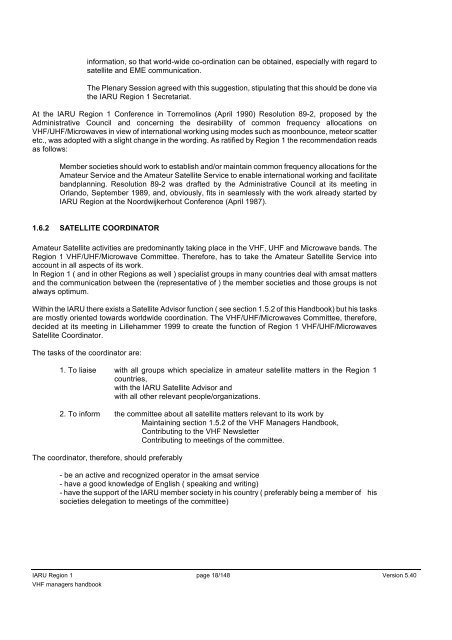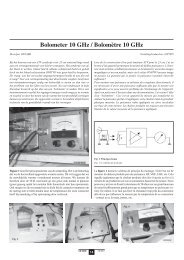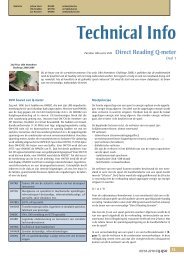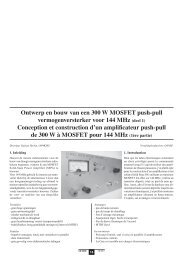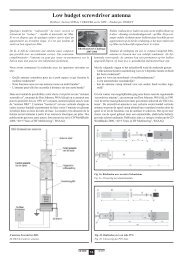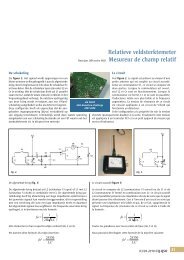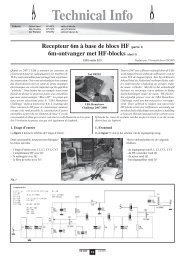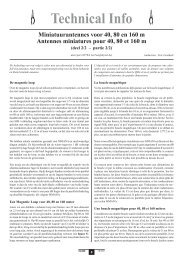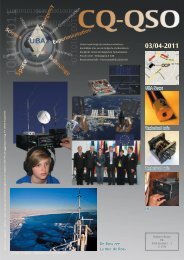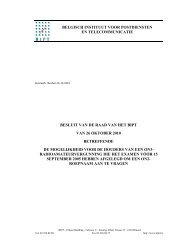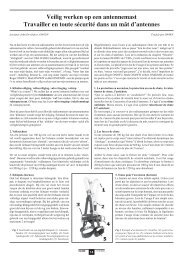IARU Region 1 VHF Managers Handbook - UBA
IARU Region 1 VHF Managers Handbook - UBA
IARU Region 1 VHF Managers Handbook - UBA
Create successful ePaper yourself
Turn your PDF publications into a flip-book with our unique Google optimized e-Paper software.
<strong>IARU</strong> <strong>Region</strong> 1 page 18/148 Version 5.40<br />
<strong>VHF</strong> managers handbook<br />
information, so that world-wide co-ordination can be obtained, especially with regard to<br />
satellite and EME communication.<br />
The Plenary Session agreed with this suggestion, stipulating that this should be done via<br />
the <strong>IARU</strong> <strong>Region</strong> 1 Secretariat.<br />
At the <strong>IARU</strong> <strong>Region</strong> 1 Conference in Torremolinos (April 1990) Resolution 89-2, proposed by the<br />
Administrative Council and concerning the desirability of common frequency allocations on<br />
<strong>VHF</strong>/UHF/Microwaves in view of international working using modes such as moonbounce, meteor scatter<br />
etc., was adopted with a slight change in the wording. As ratified by <strong>Region</strong> 1 the recommendation reads<br />
as follows:<br />
Member societies should work to establish and/or maintain common frequency allocations for the<br />
Amateur Service and the Amateur Satellite Service to enable international working and facilitate<br />
bandplanning. Resolution 89-2 was drafted by the Administrative Council at its meeting in<br />
Orlando, September 1989, and, obviously, fits in seamlessly with the work already started by<br />
<strong>IARU</strong> <strong>Region</strong> at the Noordwijkerhout Conference (April 1987).<br />
1.6.2 SATELLITE COORDINATOR<br />
Amateur Satellite activities are predominantly taking place in the <strong>VHF</strong>, UHF and Microwave bands. The<br />
<strong>Region</strong> 1 <strong>VHF</strong>/UHF/Microwave Committee. Therefore, has to take the Amateur Satellite Service into<br />
account in all aspects of its work.<br />
In <strong>Region</strong> 1 ( and in other <strong>Region</strong>s as well ) specialist groups in many countries deal with amsat matters<br />
and the communication between the (representative of ) the member societies and those groups is not<br />
always optimum.<br />
Within the <strong>IARU</strong> there exists a Satellite Advisor function ( see section 1.5.2 of this <strong>Handbook</strong>) but his tasks<br />
are mostly oriented towards worldwide coordination. The <strong>VHF</strong>/UHF/Microwaves Committee, therefore,<br />
decided at its meeting in Lillehammer 1999 to create the function of <strong>Region</strong> 1 <strong>VHF</strong>/UHF/Microwaves<br />
Satellite Coordinator.<br />
The tasks of the coordinator are:<br />
1. To liaise with all groups which specialize in amateur satellite matters in the <strong>Region</strong> 1<br />
countries,<br />
with the <strong>IARU</strong> Satellite Advisor and<br />
with all other relevant people/organizations.<br />
2. To inform the committee about all satellite matters relevant to its work by<br />
Maintaining section 1.5.2 of the <strong>VHF</strong> <strong>Managers</strong> <strong>Handbook</strong>,<br />
Contributing to the <strong>VHF</strong> Newsletter<br />
Contributing to meetings of the committee.<br />
The coordinator, therefore, should preferably<br />
- be an active and recognized operator in the amsat service<br />
- have a good knowledge of English ( speaking and writing)<br />
- have the support of the <strong>IARU</strong> member society in his country ( preferably being a member of his<br />
societies delegation to meetings of the committee)


